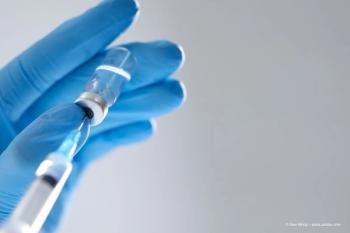
Laser treatment necessary for DME
Lasers continue to have a place in the treatment of diabetic macular edema with foveal involvement despite the advent of anti-VEGF therapy.
Take-Home:
Lasers continue to have a place in the treatment of diabetic macular edema with foveal involvement despite the advent of anti-VEGF therapy.
Dr. Chong
By Cheryl Guttman Krader; Reviewed by Victor Chong, MD
Chicago-Laser treatment, specifically the subthreshold micropulse laser, has an important role in the management of diabetic macular edema, according to Victor Chong, MD.
“Historically, it was thought direct coagulation of the microaneurysms was the goal for laser treatment,” said Dr. Chong, director of department at Oxford Eye Hospital, Oxford University Hospitals, UK.
Now researchers know, Dr. Chong said, the target is the RPE cells-not the retina-and absorption of the laser energy by those cells change the microenvironment.
This leads to closure of microaneurysms and reduction of edema, he said.
“If one is going to use a laser, it needs to be asked, ‘why would you want to scar the retina?’” he said. “Subthreshold micropulse lasers deliver enough energy to produce the desired effect-but delivers the energy in pulses so there is less collateral retinal damage and no visible damage.”
Role of laser photocoagulation for DME
The laser photocoagulation is still recognized as the standard of care when the fovea is not involved, Dr. Chong said.
However, data from a RESTORE study supports a place for laser treatment in patients with visual impairment, secondary to foveal involvement with DME.
In the study, patients were randomly selected to treatment with:
- Ranibizumab (Lucentis, Genentech) plus sham laser.
- Ranibizumab plus active (not deferred) laser.
- Sham injection with active laser.
With patients categorized into three subgroups contingent on the baseline of their eyes’ retinal thickness, it was clear the anti-VEGF treatment was best in the subgroup with the thickest retinas (>400 μm on time-domain OCT), Dr. Chong said.
However, any benefit of anti-VEGF injection over laser monotherapy was minimal in patients whose eyes had a retinal thickness of 300 μm or less.
In a second subgroup analysis from the study, patients were grouped by whether or not they had prior laser treatment.
While differences between treatments were not statistically significant within that subgroup, mean change in BCVA-from baseline to 12 months-was greater in patients treated with ranibizumab alone than in those receiving ranibizumab plus laser, 7.6 vs. 4.5 letters, respectively.
However, among the non-treated patients, BCVA gain was greater for the group treated with both ranibizumab and laser than those receiving ranibizumab monotherapy, 8.0 vs, 5.9 letters, respectively.
“Eyes with prior laser treatment joined the study as laser treatment failures, and so it is not surprising to find in that situation (the) laser treatment did not add much value to ranibizumab,” Dr. Chong said. “However, the outcomes were rev
ersed for eyes with no prior laser treatment.”
Pre- and Post-Laser: Defending the role of subthreshold micropulse laser, Victor Chong, MD, reviewed randomized, controlled clinical trial evidence supporting laser treatment for diabetic macular edema. Shown here are images preoperatively (left) and 12 months postoperatively (right) with subthreshold micropulse laser treatment (Images courtesy of Victor Chong, MD).
Further evidence
Results from the DRCR.net protocol I study show that even with ranibizumab injections, laser treatment is often needed.
Over a period of 3 years, 46% of patients treated with ranibizumab with deferred laser still needed laser treatment. This was despite receiving 14 intravitreal injections at a cost of about $28,000 over time (based on drug cost of $2000 per injection, not including surgeon and facility fees)
Considering about half of the patients entered into the trial had previous laser treatment, more than 70% of the ranibizumab-treated patients had laser treatment at some point during 3 years, even in the deferred laser group.
“If you are saying laser is not important in the anti-VEGF era, it is like spending $30,000 to buy a car and being told that about half of the time you need to do something else to keep it working, but that something else is not important,” Dr. Chong said.
Not having a micropulse laser, Dr. Chong said, is a common reason retina specialists give for not performing subthreshold micropulse laser treatment for DME.
However, he said anyone who has a transpupillary thermotherapy laser in fact has a micropulse laser because it is the same 810 diode laser.
Victor Chong, MD
E: victor@eretina.org
Dr. Chong is a consultant for Novartis and Iridex, a speaker for Quantel, and receives donated equipment from Quantel and Iridex.
Newsletter
Keep your retina practice on the forefront—subscribe for expert analysis and emerging trends in retinal disease management.














































